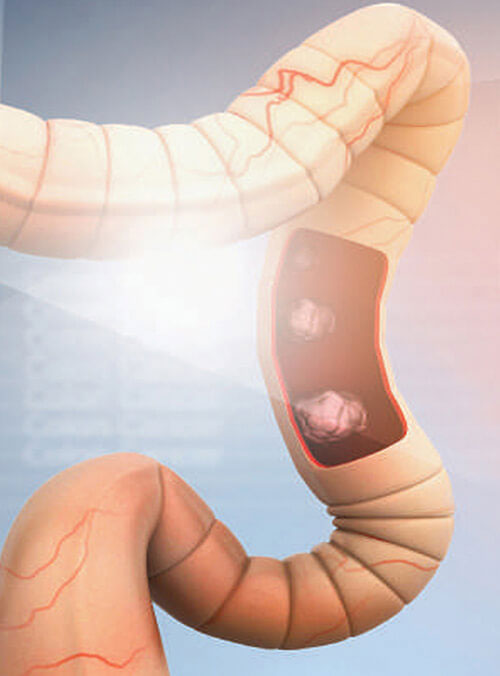Your Colorectal Health, Our Priority
With our comprehensive suite of screening services and treatment options, our experienced colorectal specialist and medical team promise you peace of mind whilst ensuring a strong and healthy colon.


Screening forColorectal Cancer
As colorectal cancer is now the most common cancer in Singapore affecting both males and females, you should familiarise yourself with its risk factors and screening options.
Colon and rectal cancer originates on the inner lining of the colon and rectum. The lining of the colon is continuously growing and shedding, hence the lining is undergoing cell replication all the time. With each replication, there is always a chance of a mutation. After a sequence of four or five mutations in the cell, they may turn cancerous.
Most colon cancer cases follow the adenomacarcinoma sequence. The colon wall first mutates into adenoma, a non-cancerous growth usually in the form of a polyp. Over time, with more mutations, adenoma changes into carcinoma, the cancerous form.
Risk factors
- GeneticsLess than 5% of such cancers are due to abnormalities in the genetic constitution of the patient.
- AgeAlthough most of these cancers occur in patients over 50 years old, about 6% occur in people younger than 45 years, and about 20% occur in people younger than 55 years. People should remain watchful, especially if they have other risk factors.
- Family historyThe risk increases when one has close family members who have had colorectal cancer.
- Personal history of polyps or colorectal cancerIf you have a history of polyps or colorectal cancer, the risk of developing cancer or having it recur increases; the greater the number of polyps and the earlier the age of the first cancer, the higher the risk.
Screening methods
There are several ways to screen for this cancer. While the first is a purely screening method, the others are both screening and diagnostic tools:
- Stool occult blood testThe patient sends a small stool sample to be tested. The presence of blood suggests that there are cancerous growths. With a 70–85% accuracy, this test assumes that any cancerous growth would bleed as the stools pass over it.
- ColonoscopyA flexible tube is inserted into the anus and advanced along the rectum and colon until it reaches the beginning of the colon. The patient is usually sedated. This technique allows direct visualisation rather than relying on indirect imaging techniques; it is the only technique that allows polyps to be removed.
- Barium enemaA bag of barium is poured into the colon through a tube inserted into the anus. The patient is rotated so that the barium can flow around the colon. Air is then pumped through the tube to distend the colon and X-ray images are taken with the patient in different positions.
- CT colonography (virtual colonoscopy)A tube is inserted into the rectum via the anus, then air is pumped in to distend the colon. After the patient lies on his back in the CT scanner, he is given an injection, after which a scan will be taken. The process is repeated with the patient on his tummy.
It is important to screen early, especially if one falls under the high-risk category. Screening is crucial because, when detected early, colorectal cancer is highly treatable.

